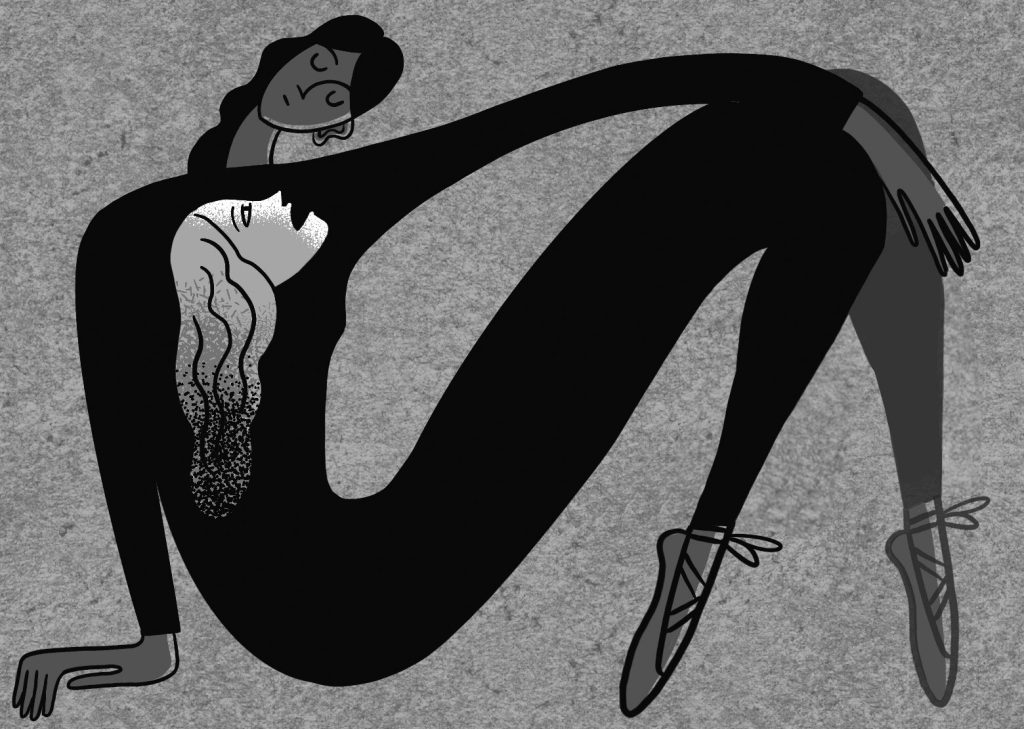Tara Sidhoo Fraser was born with a blood vessel condition known as an arteriovenous malformation. An AVM causes groups of blood vessels to become unusually interwoven, bypassing normal tissue and forming direct connections with each other. Most AVMs exhibit no obvious symptoms; they are like ticking time bombs in the body, waiting to explode. Typically they come to light in one of three ways: they are accidentally found when treating another, unrelated condition; the bomb goes off, the blood vessels burst, and subsequent medical attention is required; or they’re found after death, during an autopsy.
Fraser’s AVM is in her brain, and it is large, covering the area from her left thalamus in the middle down to her brain stem. Brain AVMs are uncommon, occurring in less than 1 percent of the population. Bleeds from brain AVMs are also uncommon — seen in approximately 1 to 3 percent of all brain AVMs each year. Fraser’s AVM caused a hemorrhagic stroke, resulting in an amnesia from which she has never fully recovered. Between 20 and 30 percent of AVM brain bleeds result in permanent brain damage, according to the New Jersey Brain and Spine neurosurgery practice. In other words, Fraser’s situation is exceedingly rare.

The dance between dual selves after a case of amnesia.
Jamie Bennett
What is it like to piece together a life when contours of it are hazy, out of reach, and seen through someone else’s eyes? Fraser offers one answer with When My Ghost Sings. Never does she give statistics like those above; never does she tell the reader how her life has changed. She doesn’t actually have access to the recollections necessary to compare her existence before and after her stroke. The details she provides of her diagnosis are limited and brief. The initial explanation is framed as a memory fragment: a doctor tells her, “The bad news is . . .” Later, another doctor gives her more details, which she does remember: “The measurement for AVMs ranges from grade 1, the smallest, to grade 5, the largest. Yours is size 4.” During surgery, her medical team learns the true extent of the damage, noting that her AVM caused “several aneurysms and a bleed from her cerebral cortex into her brain stem.”
Beyond these few details and a single-page introduction describing AVMs, Fraser relays no other medical information. Instead, When My Ghost Sings reads like an inquiry into the affective experience of losing the memories of the first thirty-two years of a life. Sometimes that experience is one of style: her communication expands as she recovers from her stroke, transitioning from simple, subject-verb sentences (in response to the size of her AVM, she says, “Oh. It is big”) into more complex ideas and actions (like expressing interest in travelling abroad like she used to). Most of the time, however, that experience is thematic. Fraser envisions the loss of her memories as distinctly corporeal, because they’re stored in a body that now feels foreign to her.
Fraser’s subjective rendering of her body is disjointed: a literary depiction of two separate people. There is post-stroke Tara, whom she describes in the first person, and there is her pre-stroke self, the eponymous Ghost. Presented in the third person, Ghost is the someone else whom Fraser sees in the memories she has been able to slowly recover. At times, it’s as if Ghost controls Fraser, whose emotions are distinct from those of this other person. Fraser envisions Ghost’s past as stored in their shared body, a now common trope of memory studies. Her enjoyment of dance, for example, is lodged in her “Achilles heel, beneath the thickened vessels, somewhere deep” in her muscle tissue. Ghost’s relationship with her former partner — referred to only as “the boy,” though he’s “not cisgender”— is “bundled with fat” and “crammed” into her lymph nodes.
In such passages, Fraser depicts her pre-stroke history as deep within her body, even though it occurred to someone she doesn’t remember as herself. In other moments, she imagines her amnesia dissociative self as someone with whom she’s in combat. Having broken up with the boy after her surgery, Fraser eventually visits him at his new “crooked farmhouse,” where they sit on his porch and watch the mountains. As she’s about to leave and return to the city, Ghost “stirs” in her. Fraser imagines that Ghost’s “legs are stretching, pushing against my ribs, my sternum, her ballerina toes curling around the softest parts of my throat until she has filled every fissure. With one swift kick, she knocks my chin hard, again, again, until my lower lip quivers beneath her weight.” The quivering of a lower lip signals that someone is about to cry, but because Fraser is disconnected from the source of those emotions, she cannot understand her bodily reaction. She’s drawn to her ex, she tells her new partner, Jude, because he remembers what she cannot, yet that causes tension in the current relationship.
Fraser’s imagining of her dual selves as in combat with each other makes for a compelling metaphor. Indeed, her negotiation of selves is one that is difficult to imagine in any way other than as combative. Her post-stroke life is a blank slate, one that requires her to learn who she is anew. Fraser makes lists: “I document who I am. Who I want to be.” These lists are “meant only for myself,” she tells us. “The lists are building me.” But lists cannot replace thirty-two years of a life, and so when Fraser’s Ghost sings, it is a song of a past that refuses to be forgotten, even amid multiple aneurysms, a stroke, and a newly rebuilt life.
Kelly Baron is a doctoral candidate in English literature at the University of Toronto.

